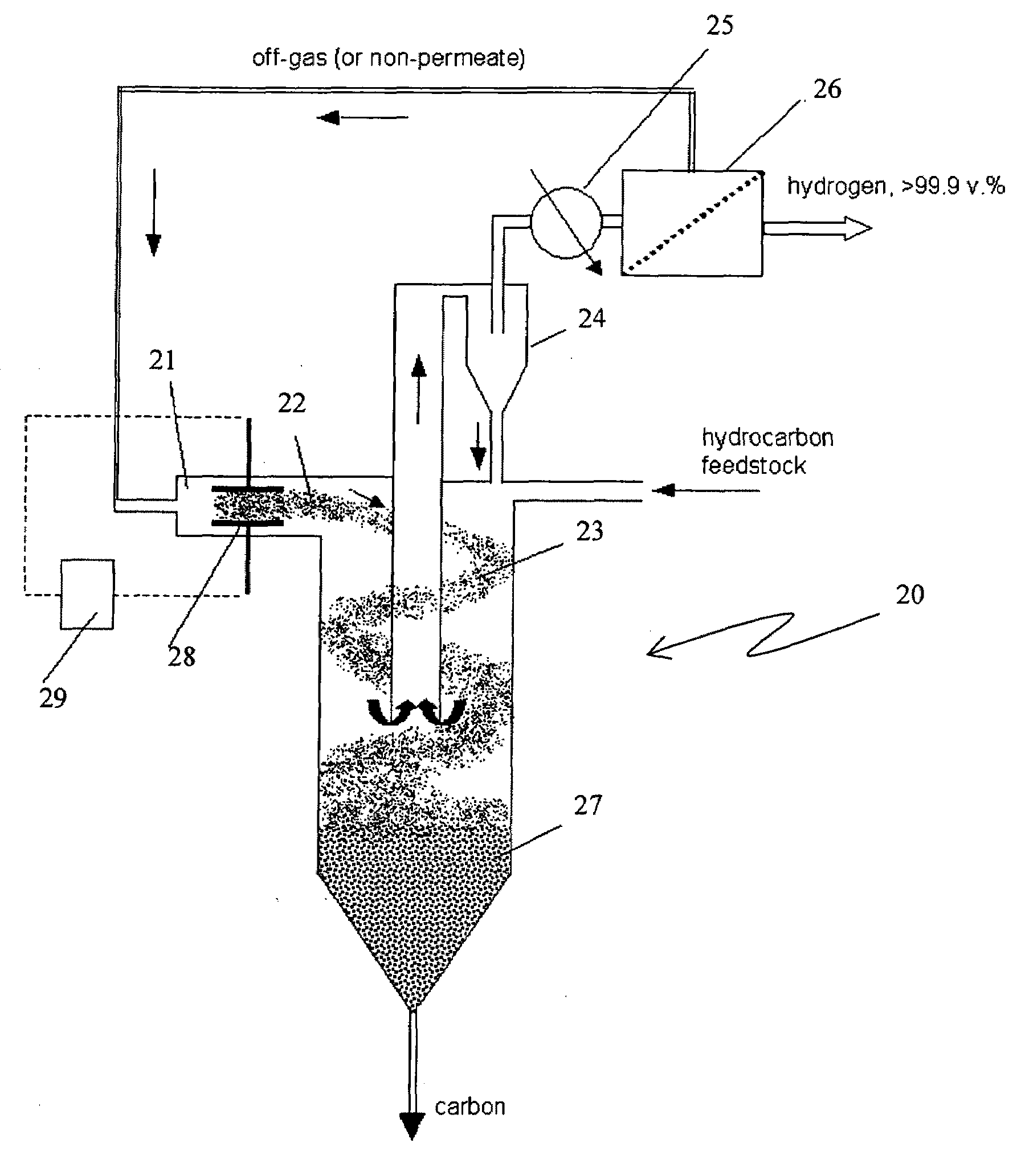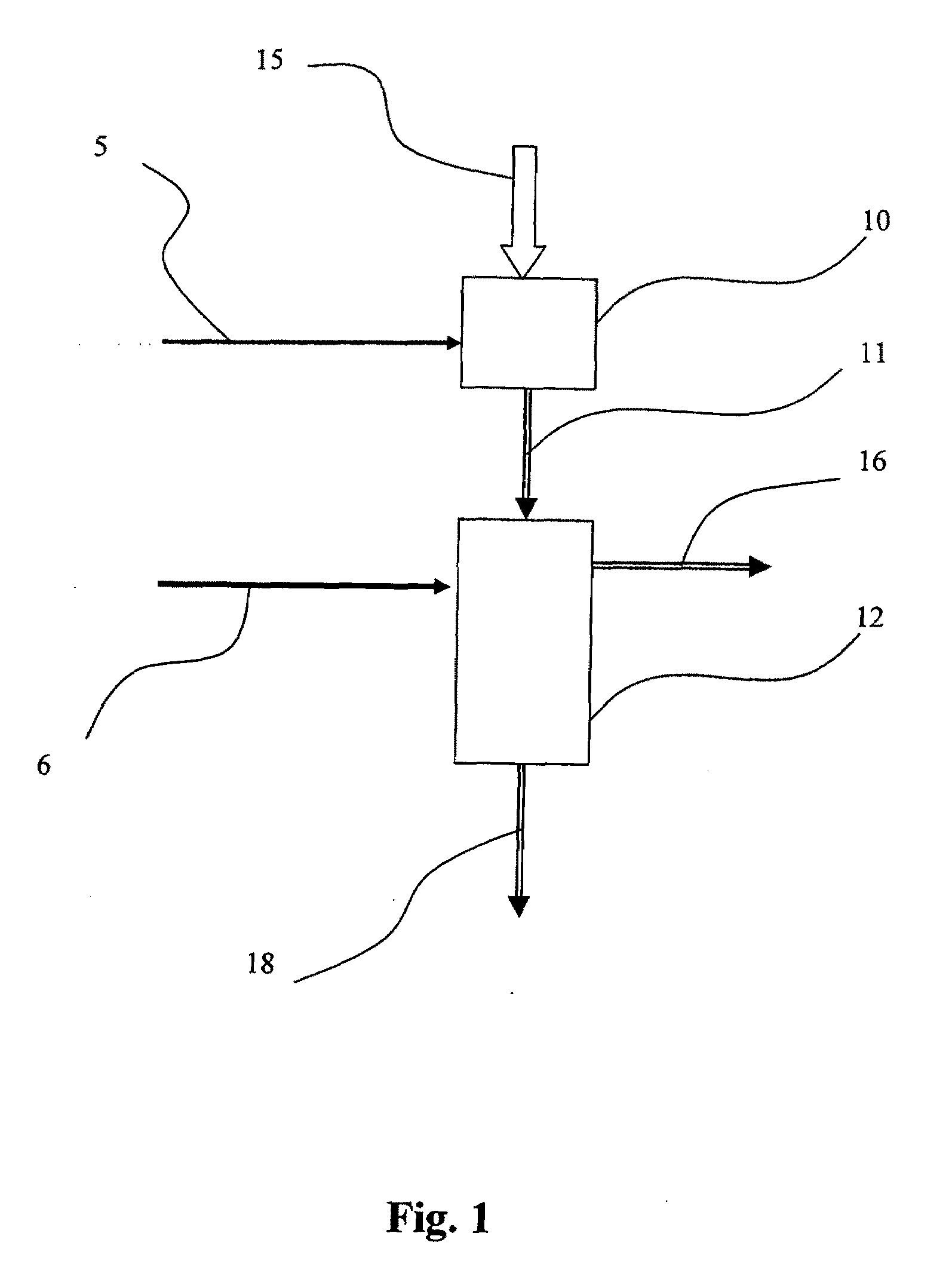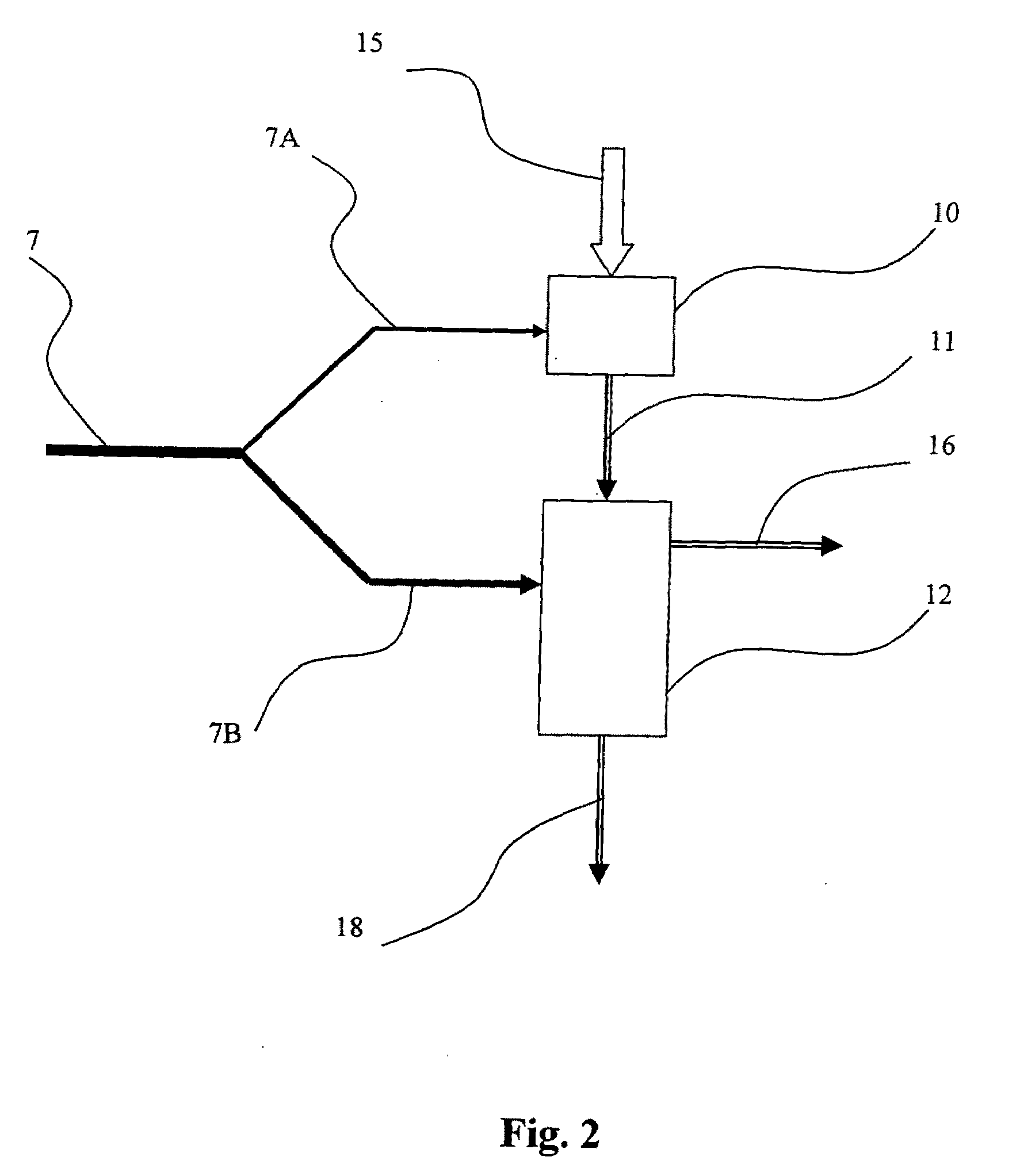Process and apparatus for hydrogen and carbon production via carbon aerosol-catalyzed dissociation of hydrocarbons
a technology of hydrocarbon dissociation and process, which is applied in the direction of chemistry apparatus and processes, chemical/physical/physical-chemical processes, energy-based chemical/physical/physical-chemical processes, etc., can solve the problems of catalyst deactivation, energy-intensive processes, and major technological challenges, and achieve simple process, reduce co2 emission, and simplify the process
- Summary
- Abstract
- Description
- Claims
- Application Information
AI Technical Summary
Benefits of technology
Problems solved by technology
Method used
Image
Examples
examples
[0078]Experiments demonstrated technical feasibility of the present invention. FIG. 6 depicts the schematics of the carbon aerosol generator 21 consisting of at least two electrodes 52 placed inside a tubular or other shape vessel 58. Electrodes are made of graphite or a variety of metals and / or their alloys, such as iron (Fe), nickel (Ni), copper (Cu), stainless steel, nickel-copper (Ni—Cu) alloy, and the like. A power source 54 supplies high voltage to the electrodes resulting in the generation of non-thermal plasma discharge 50.
[0079]Hydrocarbon feed 7 enters the CAP generator 21, and is exposed to the non-thermal plasma 50 which can create temperatures above 900° C. causing hydrocarbon dissociation and formation of carbon aerosol particles 56 that become airborne and are carried away by the gaseous stream or drop via gravitational pull into the vortex pyrolysis reactor 20.
[0080]FIG. 7 is a graph of experimental results of methane decomposition at 850° C. using carbon aerosol par...
PUM
 Login to View More
Login to View More Abstract
Description
Claims
Application Information
 Login to View More
Login to View More - R&D
- Intellectual Property
- Life Sciences
- Materials
- Tech Scout
- Unparalleled Data Quality
- Higher Quality Content
- 60% Fewer Hallucinations
Browse by: Latest US Patents, China's latest patents, Technical Efficacy Thesaurus, Application Domain, Technology Topic, Popular Technical Reports.
© 2025 PatSnap. All rights reserved.Legal|Privacy policy|Modern Slavery Act Transparency Statement|Sitemap|About US| Contact US: help@patsnap.com



